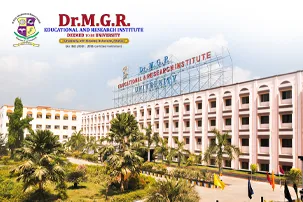Making good decisions is one of the most important skills any leader can possess. Strategic decision-making involves a complex process of evaluating potential outcomes and developing plans for the future. With a variety of decision-making models available, it can be difficult to know which one is right for you and your organisation. In this blog post, we will explore five of the most popular decision-making models in management. We will look at each model in detail to help you ascertain which is best suited to your needs and enable you to make better decisions with confidence.
1. Rational Model
The rational model is the most traditional and well-known decision-making model. It is based on the assumption that decision-makers think rationally and will make decisions that maximise their utility. The steps in the rational model are:
- Define the problem
- Identify objectives
- Generate alternatives
- Analyse alternatives
- Select the best alternative
- Implement the chosen alternative
2. Intuitive Model
The intuitive model is the simplest of all the decision-making models. It involves using your intuition or ‘gut feeling’ to make a decision. This model is most suitable for straightforward decisions that do not require much analysis.
To use the intuitive model, simply consider the options and choose the one that feels right. Trust your instincts and go with your gut feeling. This model is best used when you have experience in handling a particular situation and know what you are doing.
While the intuitive model is quick and easy, it does have some drawbacks. Intuition can be unreliable, especially if you are under stress or pressure. This model also leaves little room for rational thought or consideration of other options. If you are unsure about a decision, this model is probably not the best one to use.
3. Recognition Primed Model
The Recognition Primed Model (RPM) is a decision-making model that was developed by Garth Saloner and David A. Rosenkrantz in the early 1990s. The RPM is based on the recognition-primed decision (RPD) theory, which states that people make decisions by recognising patterns and then choosing the course of action that best fits the situation. The RPM consists of three steps:
Recognize the problem or opportunity:
This step involves recognising that there is a problem or opportunity that needs to be addressed.
Generate possible solutions:
This step involves generating a number of possible solutions to the problem or opportunity.
Select the best solution:
This step involves selecting the best solution from among the possible solutions generated in Step 2.
4. Bounded Rationality Model
Although a rational model is ideal, sometimes, there are one or multiple constraints in a given business situation. There could be time constraints, limited information or resources, making a perfect decision almost impossible. In such a scenario, it is best to go for a business solution which offers the best possible outcome under the present circumstances. This is the core principle of the bounded rationality model.
5. Creative Model
In many business scenarios, there are cases where conventional wisdom and knowledge are no longer applicable. This brings us to the creative model, a case where leaders have to make innovative decisions by completely thinking outside the box. Hence, conventional rationality and experience can be swapped for something truly novel. While this is undoubtedly a significant challenge for the management, if successful, this model can pave the way to more new and revolutionary ideas, and completely transform the business landscape.
Learn Strategic Decision Making With an Executive MBA From Dayananda Sagar University, Bengaluru (DSU)
Learn strategic decision-making from top industry leaders and experts by enrolling in the Executive MBA program offered by Dayananda Sagar University. This interactive course spans a period of 17 months and promises a positive impact on the students on a personal and organisational level. With a special focus on Strategic Decision Making & Management, Marketing Management, Project Management and more, the Executive MBA is geared to create competent managers who will positively impact a society which is constantly evolving due to technological revolution, globalisation and a host of other geopolitical factors. So, enroll in this program today and boost your decision-making and leadership skills exponentially.
Conclusion
We hope that this article has provided you with an overview of the top five decision-making models in strategic decision-making. Each model offers its own advantages and disadvantages, so it is important to carefully consider each one before making your final selection. With an understanding of these models, you can make more informed decisions when facing complex challenges and uncertainties. By utilising the right model for your situation, you can ensure that you have a better chance of achieving successful outcomes from every strategic decision made.




